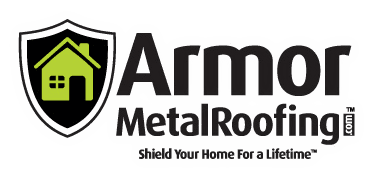About Shingle Roof Repair
The average residential roof will last about 10 to 20 years with proper maintenance. Depending on where the house is located, and considering possible damage from high wind, rain, the sun, snow, or storm debris, a roof may not last that long and could need to be repaired or replaced. The work may involve repairing or replacing a few tiles, adding a second layer, or a complete tear off down to the rafters and starting from scratch. But before a homeowner gets to that point, signs of damage or the need for replacement need to be recognized.
Signs of roofing damage
In many cases, a roof can be visually inspected from ground level using binoculars or a camera with a zoom lens, by looking out a second story window, or by climbing a latter. Here are signs that a shingle roof is in need of repair.
- Granules in the gutters or downspout at ground level. As roofing shingles wear down over the years – battered by heat and ultraviolet rays, storms, and storm debris – the small, pebble like granules on the top of shingles will deteriorate, weaken, and become detached.
- Shingles or pieces of shingles on the ground or scattered on the roof.
- Shingles that are attached, but worn smooth.
- Shingles that are cracked or curled up.
- Signs of water damage or mold in the house, usually on ceilings or in the attic.
Steps to follow when repairing or replacing roof shingles
Whether a home owner decides to repair a shingle roof, or hire a roofing contractor, the basic steps are the same for either party. To repair a shingle roof, follow these steps:
- For a shingle that is cracked, place a bead of roofing sealant under the crack
- Forcefully press down the shingle, holding it in place for 30 to 60 seconds. This should be long enough for the shingle to adhere to the roof and for the sealant to spread into the cracked area.
- Add a bead of sealant on top of the shingle to further seal the crack.
- Smooth over the sealant with a putty knife, drawing the blade down and away from the crack. Smooth the sealant along the cracked area as necessary.
To replace shingles, follow these steps:
- To remove damaged a shingle, lift the edges of surrounding shingles, carefully removing nails with pliers or a pry bar. Slide out the old shingle, being careful not to dislodge others in the process. Scrape away or remove any loose or brittle roof cement that’s left behind. In some cases, nails will protrude from the roof if a shingle has been torn off during a storm, in which case they need to be removed. If a nail isn’t sticking up, then don’t bother removing it.
- Shingles are normally oblong, with squared edges. To make it easier to slide a new shingle into place, it may be necessary to round the back corners with a sharp utility knife. Be sure to place the single on a piece of wood or other solid surface, and press the blade hard into the shingle when making the cut.
- Slide the new shingle into the gap. Its front edge should be aligned with shingles on each side and its back edge hidden under shingles in the row above it. This is why the shingles in step two needed to have their back corners rounded.
- Lift up the corners of overlapping shingles and fasten the top of the new shingle with 6d galvanized roofing nails driven through each corner. Then cover nail heads with roof cement, and smooth down overlapping shingle edges.
When replacing rows of shingles, it’s only necessary to round the back corners where the top row meets the row above. Ridge shingles, the tent-shape shingles along the peak of a roof, also can be replaced following the same steps. But a key point to remember is these shingles cannot be replaced with flat shingles – they must be replaced with ridge shingles.
Tools and materials
Selecting an asphalt shingle for a roofing project is a major effort because of new colors and texture variations on the market. The days of having to choose between a simple brown or black roofing tile are long gone, giving home owner’s latitude with color and appearance. Big box home improvement retailers normally have a good selection to review, as well as roofing contractors.
The most common shingle style is a three-tab shingle that has two thin slots dividing the exposed shingles into three parts or tabs. Most shingles today are “asphalt” with a fiberglass or inorganic mat. Asphalt shingles with an organic or cellulose fiber mat are less common but still in use. Shingles are rated by their weight per square, meaning the shingle will last longer depending on the weight. A rule of thumb is to pick a shingle rated at 25 years or longer.
Besides the shingles themselves, here are the most commonly needed tools and materials for the project:
- A pry bar is needed to remove nails, though in some cases a pair of pliers, needle nosed or regular, may work.
- Use a metal scraper to remove left over roofing cement.
- Replacement shingles are a must.
- A utility knife with a new blade, as scissors or a knife cannot be used to trim shingles.
- 6d galvanized roofing nails.
- A hammer with a large head, 16 to 20 ounces should do.
- Asphalt roof cement, available for use in a caulking gun or in a tub to be lathered in place.
- Trowel, for smoothing the roofing cement and pressing shingles in place.
A major consideration for a homeowner with any roofing project is deciding to do the work, or hiring a roofing contractor instead. Minor repairs or shingle replacement can usually be handled, but more significant work should be left to trained professionals with the experience, training, and tools to get the job done right from beginning to end.


1 Comment
Comments are closed.